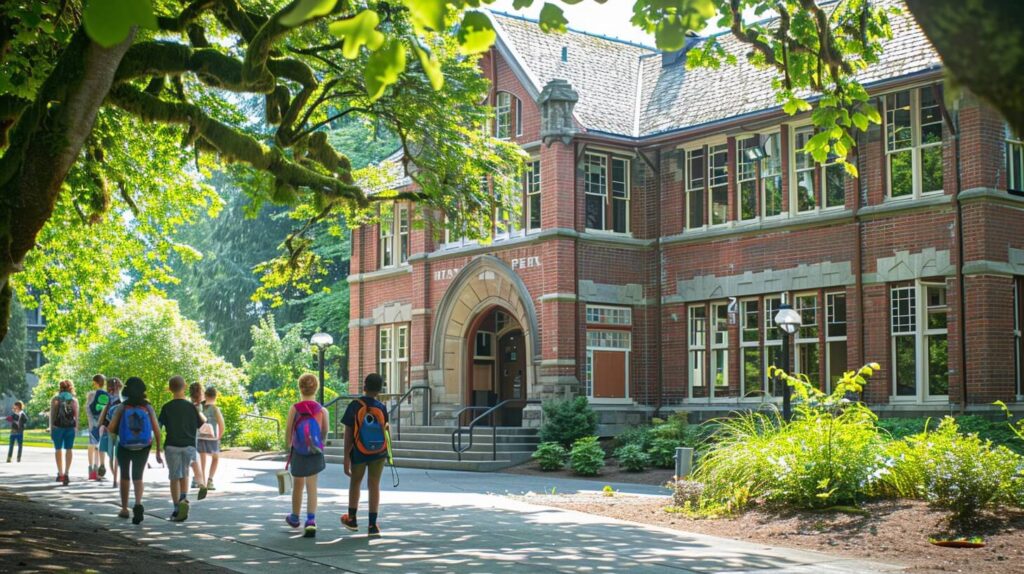Oxford Literary Tours, a city renowned for its prestigious university, is also a treasure trove of literary history.
Its cobblestone streets, historic buildings, and picturesque landscapes have inspired some of the most celebrated authors in history.
This guide will help you explore self-guided walking tours that cover locations related to famous Oxford authors like Lewis Carroll, J.R.R. Tolkien, and Philip Pullman.
Whether you’re a literary enthusiast or just curious about the city’s rich heritage, these trails will offer you a deeper appreciation of Oxford’s literary legacy.

Common Questions and Concerns
Before diving into the routes, let’s address some common questions and concerns you might have:
- What are the key literary landmarks in Oxford?
- How can I create a self-guided walking tour?
- Are these tours suitable for all fitness levels?
- What should I bring on a self-guided tour?
- How do I ensure I don’t miss any important sites?
- Is there any cost associated with visiting these landmarks?
- What’s the best time of year to visit?
- Are there any local events or festivals related to these authors?
- How can I make my tour more interactive?
Key Literary Landmarks in Oxford
Oxford’s streets and colleges are brimming with sites tied to its literary greats.
Here’s a deeper dive into some must-visit spots:
The Eagle and Child Pub
Known affectionately as “The Bird and Baby,” this pub was the regular meeting spot for the Inklings, a literary group that included J.R.R. Tolkien and C.S. Lewis.
Here, over pints of ale, they discussed their works in progress, including “The Lord of the Rings” and “The Chronicles of Narnia.”
When you visit, you can almost hear the echoes of their passionate debates and imagine the camaraderie that flourished within its walls.
Christ Church College
Christ Church is not just a stunning example of Oxford’s architectural beauty but also a significant literary landmark.
Lewis Carroll, whose real name was Charles Lutwidge Dodgson, was a mathematics lecturer here.
The college’s grand hall inspired the setting for the Mad Hatter’s Tea Party in “Alice’s Adventures in Wonderland.”
Walking through the hallways, it’s easy to see how Carroll’s whimsical world took shape.
The Bodleian Library
One of the oldest libraries in Europe, the Bodleian Library is a haven for book lovers.
It houses an extensive collection of historical texts and manuscripts, including original works by J.R.R.
Tolkien and other literary giants. The library’s Radcliffe Camera is an iconic symbol of Oxford and a must-visit for any literary tour.
Exeter College
Philip Pullman, the author of “His Dark Materials” series, attended Exeter College.
The college served as the inspiration for Jordan College in his books.
The serene environment and historic buildings provide a perfect backdrop for reflecting on Pullman’s imaginative universe.
Magdalen College
C.S. Lewis spent much of his academic career at Magdalen College.
His daily walks along Addison’s Walk, a beautiful pathway within the college grounds, often provided him with inspiration.
The tranquility of the walk allows visitors to step into Lewis’s shoes and contemplate the nature of creativity and imagination.
Merton College
J.R.R. Tolkien was a professor at Merton College, and the college’s peaceful gardens and medieval architecture deeply influenced his writing.
Strolling through the college grounds, you can almost picture Middle-earth coming to life.
Creating Your Self-Guided Walking Tour
Crafting your own self-guided walking tour through Oxford’s literary history can be an enriching experience.
Here’s how to get started:
Plan Your Route
Begin by identifying the key landmarks you want to visit.
Use a map to plot out a logical route that maximizes your time and minimizes backtracking.
Ensure your route includes a mix of outdoor and indoor sites to give you a well-rounded experience of Oxford’s literary heritage.
Download an Audio Guide
Many organizations and apps offer downloadable audio guides that provide historical context and fascinating anecdotes about each site.
These guides can enhance your experience by offering insights that you might miss otherwise.
Bring Essentials
Comfortable walking shoes are a must, as Oxford’s cobblestone streets can be tough on your feet.
Pack a water bottle to stay hydrated, a camera to capture memories, and an umbrella or rain jacket to prepare for Oxford’s unpredictable weather.
Don’t forget a notebook or a travel journal to jot down your thoughts and impressions.
Set Your Pace
One of the joys of a self-guided tour is the ability to set your own pace.
Take your time to soak in the atmosphere of each location.
If a particular site captivates you, linger longer. The goal is to enjoy and immerse yourself in the experience, not to rush through it.
Use Guidebooks and Apps
Guidebooks can be incredibly helpful, providing maps, historical background, and suggested routes.
Apps like VoiceMap offer narrated walking tours that can make your experience more interactive and engaging.

Relatable Example: My Day Walking in Oxford
Last summer, I embarked on a self-guided literary tour of Oxford with a few friends.
We started our journey at the Bodleian Library, marveling at its ancient architecture and vast collection of books.
As we strolled through the city, we visited Exeter College and imagined the world of Lyra Belacqua from “His Dark Materials.”
Our journey ended at the Eagle and Child Pub, where we enjoyed a pint and reflected on the rich literary history we had just explored.
Detailed Routes and Descriptions
To help you get started, here are three suggested routes that cover the major literary landmarks in Oxford:
Route 1: The Inklings Trail
The Eagle and Child Pub
- The Eagle and Child Pub: Begin your journey at the heart of the Inklings’ gatherings. Enjoy a drink and imagine the lively discussions that took place here.
- Pusey House: Just a short walk away, this was another meeting place for the Inklings.
- Magdalen College: Wander through the grounds and walk along Addison’s Walk, where C.S. Lewis found inspiration.
- Merton College: Visit the gardens and medieval architecture that influenced J.R.R. Tolkien’s works.
- The Kilns: Although a bit farther out, visiting C.S. Lewis’s home where he wrote many of his famous works is a rewarding end to the trail.
Route 2: Alice in Wonderland Trail
Christ Church College
- Christ Church College: Explore the hallways and grand hall that inspired “Alice’s Adventures in Wonderland.”
- Alice’s Shop: Across from Christ Church, this charming shop is filled with “Alice” memorabilia and was featured in Carroll’s stories.
- The Botanic Garden: Lewis Carroll often visited this garden with Alice Liddell, the inspiration for Alice.
- The River Thames: Take a relaxing walk along the river where Alice and her sisters went boating.
Route 3: Philip Pullman’s Oxford
Exeter College
- Exeter College: Begin at the college that inspired Jordan College in “His Dark Materials.”
- The Covered Market: A favorite spot of Pullman’s, the market’s bustling atmosphere is reminiscent of scenes from his books.
- The Bodleian Library: Visit the historic library that houses many of the texts Pullman researched.
- Port Meadow: End your tour with a stroll through this vast, open space that features in “Lyra’s Oxford.”
Conclusion: A Journey Through Literary History
Exploring Oxford Literary Tours heritage through self-guided walking tours offers a unique and immersive experience.
From the haunts of the Inklings to the whimsical world of Alice and the fantastical realms of Philip Pullman, each trail reveals a piece of the city’s rich literary tapestry.
So, lace up your walking shoes, grab a guidebook, and step into the pages of history as you wander through the storied streets of Oxford.
Happy exploring!
Answer
What famous authors are associated with Oxford Literary Tours?
Oxford has been home to numerous renowned authors, including:
- Lewis Carroll (Charles Dodgson), author of “Alice’s Adventures in Wonderland”
- J.R.R. Tolkien, creator of “The Lord of the Rings”
- C.S. Lewis, writer of “The Chronicles of Narnia”
- Philip Pullman, author of “His Dark Materials” trilogy
- Oscar Wilde, who studied at Magdalen College
What are some key literary landmarks to visit in Oxford Literary Tours?
Some important literary sites in Oxford Literary Tours include:
- The Eagle and Child pub, where Tolkien and Lewis met with their writing group
- Christ Church College, which inspired locations in Alice in Wonderland
- Magdalen College, where C.S. Lewis taught
- The Bodleian Library, featured in Philip Pullman’s novels
- The Botanic Garden, which appears in Pullman’s “The Subtle Knife”
Are there any self-guided literary walking tour maps available?
Yes, several self-guided literary walking tour maps of Oxford are available online.
The Oxford Visit website offers downloadable maps and suggested routes covering key literary landmarks.
These can be accessed on your phone or printed out3.
How long does a self-guided literary walking tour typically take?
A basic self-guided literary walking tour of Oxford’s city center typically takes 1-2 hours at a leisurely pace.
However, you can extend this by spending more time at specific sites or colleges.
A more comprehensive tour covering additional locations could take 3-4 hours.
Can I visit Oxford colleges featured in famous literary works?
Many Oxford colleges allow visitors during certain hours, though some may require advance booking or have restricted access.
Christ Church and Magdalen College, both significant in literary history, are often open to visitors.
However, opening times and access may vary, especially during exam periods, so it’s best to check college websites for current visiting information.
Pingback: Bodleian Library history: Explore the Fascinating History